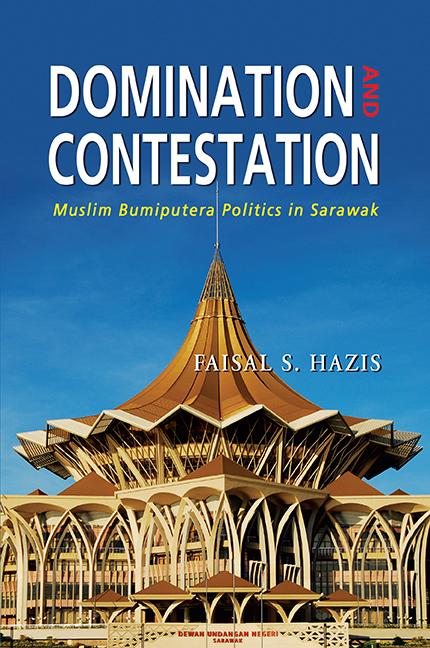Book contents
- Frontmatter
- Contents
- List of Tables
- List of Figures
- Preface
- List of Abbreviations
- 1 Introduction
- 2 State and Social Forces in Sarawak
- 3 The Resurgence of Muslim Bumiputera Politics, 1970–81
- 4 Years of Turbulence, 1981–87
- 5 Consolidation and Domination of the Muslim Bumiputera, 1987–2003
- 6 Muslim Bumiputera Politics in the Post-Mahathir Era, 2003–06
- 7 The Coastal Malays of Southwest Sarawak: A Case Study of the Muslim Bumiputera's Political Domination
- 8 Conclusion
- Postscript
- Appendices
- Bibliography
- Index
- About the Author
7 - The Coastal Malays of Southwest Sarawak: A Case Study of the Muslim Bumiputera's Political Domination
Published online by Cambridge University Press: 21 October 2015
- Frontmatter
- Contents
- List of Tables
- List of Figures
- Preface
- List of Abbreviations
- 1 Introduction
- 2 State and Social Forces in Sarawak
- 3 The Resurgence of Muslim Bumiputera Politics, 1970–81
- 4 Years of Turbulence, 1981–87
- 5 Consolidation and Domination of the Muslim Bumiputera, 1987–2003
- 6 Muslim Bumiputera Politics in the Post-Mahathir Era, 2003–06
- 7 The Coastal Malays of Southwest Sarawak: A Case Study of the Muslim Bumiputera's Political Domination
- 8 Conclusion
- Postscript
- Appendices
- Bibliography
- Index
- About the Author
Summary
INTRODUCTION
To better comprehend the state's strategies in dominating the Muslim bumiputera, this chapter presents a micro analysis of the state's domination based on the study of the coastal Malays in southwest Sarawak.1 In analysing the domination of the southwest Sarawak Malays, this chapter begins by giving a brief description of the community. Through this description, an understanding of the local context that shaped the coastal Malays’ loyalty to the state can be achieved. To validate the state's domination of the coastal Malays, this chapter then discusses the voting trend of the community who had strongly backed the ruling party despite its apparent marginalization. Subsequently, an analysis of the strongmanpolitician's three-pronged strategies in dominating the coastal Malays and the community's response towards this domination will be discussed.
THE COASTAL MALAYS OF SOUTHWEST SARAWAK
Southwest Sarawak constitutes the northern region of “Old Sarawak” which is now the First Division or also known as Kuching Division. On the west of southwest Sarawak is the border between Indonesia Borneo and Sarawak, which runs along the ridge of the most westerly point of Borneo, Tanjung Datu (see Figure 7.1). Moving eastward from Tanjung Datu, southwest Sarawak stretches for nearly 100 miles of coastline until it reaches another cape known as Tanjung Po, located at the mouth of Sarawak River. Southwest Sarawak had been a zone of intense human activity since more than one thousand years ago (Harrisson 1970, p. 118). Based on the excavations by Sarawak Museum in Tanjung Datu (five archaeological sites) and Muara Tebas (four sites) in 1950, there is substantial archaeological evidence to suggest that human activity in southwest Sarawak was at its peak between the eighth and fourteenth century (Bongkissam in Santubong) (Harrisson 1970, p. 118).
During the colonial period especially the British's rule, the Malay population in southwest Sarawak increased significantly, transforming the region into a Malay land. This trend continues to persist when the independent negeri of Sarawak moves into the new millennium under the rule of the Muslim Melanau strongmen-politicians. Despite the overall growth of the Malay population in southwest Sarawak, some Malay kampongs experienced a slower growth rate compared to other Malay kampongs. In 1960, Bako was the most populated kampong in southwest Sarawak, and it continued to maintain that status after more than forty years.
- Type
- Chapter
- Information
- Domination and ContestationMuslim Bumiputera Politics in Sarawak, pp. 228 - 266Publisher: ISEAS–Yusof Ishak InstitutePrint publication year: 2011

